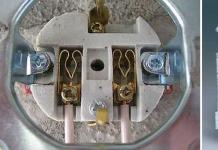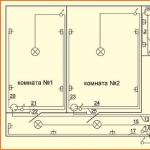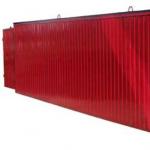Potato is an unpretentious culture: wherever you plant it, it will sprout and give a harvest. But the size of the crop with this approach does not always make us happy. All summer long, diligently look after potato plantings and collect 120-150 kg per hundred square meters - this achievement is clearly not something to be proud of. Russian agronomists believe that in our conditions it is realistic to collect at least 300–500 kg of potatoes per hundred square meters. It is only important to approach the issue of increasing productivity in the right way.
Autumn soil preparation. The battle for next year's harvest begins in the fall. Crop rotation on the site is organized in such a way that potatoes in the same place grow no more than once every 3-4 years. If the correct crop rotation cannot be organized, then soil fertility is restored using simple techniques:
- the golden rule of the potato grower: the land must not be empty. Immediately after harvesting, in August or early September, fast-growing green manure is sown on the site, for example, white mustard or watercress. In mid-October, the plants are mowed, and the site is dug up or plowed to a depth of at least 20 cm. Thanks to deep plowing, pests that have gone to winter are at the top and die due to frost;
- winter rye and oats are also used as green manure. From the secretions of rye roots, pathogenic fungi and bacteria that cause potato diseases die. If rye or oats are sown in late September - early October, and the site is dug up in the spring, then the soil will be simultaneously fertilized and disinfected;
- traps for Colorado beetles and bears are arranged along the edges of the field;
- in the fall, ash is introduced into the soil - potash fertilizer and protection from pests.
Solving the fertilizer problem
In the old days, potatoes were fertilized only with manure. Nowadays, due to the high cost, gardeners are trying to use manure sparingly or replace it.
The site should have a compost heap - a source of organic fertilizers, into which weeds, weeded to form seeds, and food waste are dumped. In such a pile, special humus worms are launched that process compost.
 Compost replaces manure
Compost replaces manure If the site is located near the house, gardeners throw food waste into the compost heap throughout the year. It is more difficult for citizens to collect organic waste, especially in winter.
In any case, egg shells and onion peels should not be thrown away: when planting potatoes, these substances are indispensable. You should not send potato peelings to the trash, as they contain useful elements. It is better to freeze the peel or dry it, and in the spring boil it and put it in a compost heap (raw peels cannot be added to the compost).
Supporters of organic farming have mastered an interesting method of processing food waste using the Baikal-EM bacteria concentrate. Waste is collected in large plastic containers with a tight-fitting lid or strong waterproof polyethylene bags (to reduce the moisture content of the biomass, the layers are sprinkled with sawdust). The advantage of the drug is that bacteria continuously process food waste, and there is no smell of decay if the container is hermetically sealed.
In order not to damage the plants, mineral fertilizers must be applied in accordance with the norms. For example, from an excess of nitrogen fertilizers, the tops will be lush and strong, and the tubers under it will be small.
planting material
Too small potatoes should not be left on the seeds: “peas” will grow from “peas”. In order to dig up potatoes of normal size in the fall, you need to plant tubers weighing at least 90-100 g, and they are exceptionally healthy, without signs of decay and rhizoctonia tubercles.
If a gardener constantly grows potatoes in the same place, using only his own planting material, after 5–6 years the variety degenerates. To prevent this from happening, planting material is updated every 4–5 years. Tubers cannot be bought in a market where potatoes are sold in an unknown year of reproduction. Elite varietal potatoes are expensive, so only a quarter of the planting material can be renewed each year.
To save money, it is useful to learn how to grow your own planting material from potato fruits - green "tomatoes". The tubers grown in this way will have all the best features of their variety, and the gardener will receive free of charge disease-free, elite seed potatoes.
 Planting material should not be very small
Planting material should not be very small Tuber preplant preparation and planting methods
It is better to plant germinated tubers: then the potatoes will sprout faster and be more resistant to pests. Before planting, potatoes are treated with growth stimulants or insecticides. The simplest preparations for disinfection are copper sulfate and Bordeaux liquid.
Even in winter, you should consider how to increase the yield of potatoes using one of the effective planting methods.
You can arrange high beds, plant potatoes in mulch, grow in bags or in barrels, with hilling and without hilling - there are no universal recommendations: each gardener, experimenting, chooses the growing method that suits him.
Excellent results are obtained by growing potatoes according to the Mitlider method: in double beds 45 cm wide, the distance between which is 1 m. It has been proven that with this method of planting the tubers grow larger than with the usual ridge. In addition, less fertilizer and effort is required to process the bushes, since there is no need to weed between the rows. Mitlider himself received a ton of potatoes from a hundred square meters. Even under adverse conditions, this technique can significantly increase the yield of potatoes.
 According to the Mitlider method, you can get up to 1000 kg of potatoes per hundred square meters
According to the Mitlider method, you can get up to 1000 kg of potatoes per hundred square meters True, it is difficult for most gardeners to get used to the sight of meter-long empty row spacings: it seems that plant the tubers more densely - and there will be even more potatoes. So that the heart does not hurt because of the "empty" place, experienced potato growers advise sowing beans or peas in the aisles: these plants saturate the soil with nitrogen and repel Colorado beetles.
But even with the traditional method of planting, it is impossible to make row spacings narrower than 70–80 cm, otherwise, due to tightness, the tubers will grow too small. In addition, from the aisles they take land for hilling.
Potatoes should not be planted too deep, especially if the soil is clayey. It is better then to pile up and form high ridges: then more tubers will form, and in such ridges the root system will get more air and heat. The rows are oriented from north to south for uniform illumination by the sun.
Fertilizer, hilling, watering
In farms where there is a lot of manure, this fertilizer is scattered over the site in spring or autumn. But if manure has to be saved, it is better to lay the substance directly into the holes before planting. It is permissible to use rotted manure (including rabbit), chicken manure, humus, mineral fertilizers. Additionally, a handful of ash, onion peels (repels Colorado potato beetles and wireworms), a tablespoon of eggshells are necessarily thrown into each hole.
 White agrofibre is an indispensable thing for early potatoes
White agrofibre is an indispensable thing for early potatoes With the traditional method of planting, two hillings are carried out: the first - after germination, the second - when the bushes reach a height of 20-25 cm. In the absence of rain, potatoes need at least two waterings: when shoots appear and before budding. If the weather is dry and the soil at a depth of 8 cm from the surface has dried up, the bushes are additionally watered once or twice per season.
Mulch, laid on potato beds and between rows, retains moisture in the soil and inhibits the growth of weeds. Sawdust, straw, pine branches, cut weeds and green manure are used as mulch. To save time on weeding or mulching the beds, the soil can be covered with black agrofibre.
Pest and disease control
There are many folk, time-tested methods of pest control. In the spring, along the edges of the plot and in the aisles, traps for bears and Colorado beetles are set. Plants are periodically sprayed with a solution of ash and laundry soap, infusion of walnut or tobacco leaves, pollinated with cornmeal. Against the Colorado potato beetles, an infusion made from the corpses of adults helps.
Effective remedies against pests and diseases are copper sulfate and Bordeaux mixture. Without them, it is impossible to save even part of the crop in the event of a late blight epidemic.
When buying insecticides or fungicides in the store, you should use these drugs strictly according to the instructions.
"Shock therapy"
Agronomists have come up with many “shock” ways to increase potato yields. According to one method, before planting, a deep transverse incision is made on the tuber to wake up the lower buds, which usually do not germinate. And thanks to the annular incision in the upper part of the tuber, the juices will be evenly distributed between all the kidneys.
 One of the options for an incision that increases productivity, according to some summer residents
One of the options for an incision that increases productivity, according to some summer residents When experimenting with cuts in planting potatoes, it is necessary to disinfect the knife each time in a weak solution of potassium permanganate. But the smell of a freshly cut tuber can attract pests.
Some gardeners advise picking off potato flowers to increase productivity. In this case, there is no particular increase in yield, but a bush that has lost flowers is traumatized, since blooming and producing fruits is the meaning of the life of a bush.
In areas where Colorado potato beetles are very common, you should not break off the tops of potato sprouts when they reach a height of 25 cm. This method was developed a century and a half ago, when there were no beetles yet. A bush with damaged tops is defenseless against pests.
Harvesting
In order not to ruin the already grown crop, the potato tops are mowed when it starts to dry (2 weeks before harvesting). Due to this, pathogenic fungi and bacteria (including phytophthora) from the stems will not fall on the tubers. The peel of potatoes in the ground will harden, and it will remain until spring.
How to kill two birds with one stone - reduce leaf growth and increase yield
A method that was used over a hundred years ago!
It often happens that, despite good care and significant growth of tops, the tubers of potatoes are nevertheless small.
The reason for this phenomenon is that strong leaves use too many nutrients to the detriment of the tubers, especially the so-called seed potato balls, while they do not bring any benefit at all.
To eliminate this phenomenon, many authoritative owners have developed the following purely practical method. This very simple method consists in the fact that after the flowering of potatoes, after one or two weeks, the tops are broken.
To clarify how this technique is applicable from a practical point of view, the following experiment is given. In 1909, on the 2nd square. sazhens were planted two equal squares of potatoes.
On the first site, 10 days after flowering, the tops were crushed by hand breaking, and the second was left under ordinary culture for control.
In autumn, more than 30 pounds of beautiful, uniform and large potatoes were harvested from the first plot, less than 27 pounds from the second, control, and much more small than large.
Thus, from breaking the stems, in addition to fineness, we get another increase of 3 pounds per 1 square. sazhen, which for a tithe will be 2400 x 3 = 7200, that is, 180 pounds of excess crop.
(“Khutorskoe khozyaystvo” 1913, No. 1)
haulm cutting
The best time to do this work is budding period. You should not be late with cutting the tops. If this work is done during the flowering period, then the growth of young stems slows down and the yield of tubers decreases.
When pruning, stems are left 15-20 cm high in late varieties and 10 cm in early ones.
In all years of testing, the potato yield was higher by 16-21% in those areas grown with pruning.
Simultaneously with checking how the seed qualities of potatoes are improving, the effect of cutting tops on the crop in the year of planting was studied. And in this case, the annual collection of tubers was 19-34% more than the usual method.
"Potatoes and Vegetables" (1957, No. 4)
Potato Hilling Tricks
Probably even those who have never planted it know that potatoes should be spudded. But how to do it right? It turns out that there are some little tricks here, writes Marina, Nekrasovskoye.
When to start hilling?
There are various answers to this question in the literature. The guideline in all recommendations is the height of the shoots, but the numbers are different: from 14 to 20 cm.
I myself prefer to start hilling as early as possible. At the same time, I focus, however, not on centimeters, but on the signals of a completely irrational "device" - intuition :)) Over time, probably, every gardener has such a flair: you just look at the plants and understand what they need right now.
In fact, early hilling replaces both weeding and the recommended loosening of the soil. In our unstable climate, it also serves to protect seedlings from recurrent frosts. Potatoes are traditionally planted in early May. And in the second half of the month - just in time for the emergence of shoots - colds usually come. The sprouts covered with a layer of soil calmly endure even a short-term drop in temperature just below zero (it happens sometimes ...)

I have noticed more than once: after hilling, potatoes seem to accelerate growth. If the weather is also favorable, the bushes grow and grow stronger literally before our eyes. Therefore, I am never too lazy to once again walk with a hoe along the rows, loosening the earth and leaning it against the ridges.
How many times to spud?
Classic - 2 hilling: the second is carried out 2-3 weeks after the first, before the potatoes bloom. But if you start this event early enough, two times is not enough. In this matter, I prefer to focus not on abstract "norms", but on the needs of real plants.
If the grown bushes fall apart, or the nest is not formed along the ridge, but grows across, in breadth, and tubers begin to peep out of the ground, turning green in the light, it is necessary to spud, no matter what they say.

I happened to spud potatoes 3 and 4 times per season. Someone will say that it is too laborious ... I don’t know, weeding is much more tiring for me. And then I walked across the field with a chopper - and the earth is loose, and there are no weeds, and the potato bushes are vigorous and beautiful, even)) And then they thank me for an excellent harvest.
What is the preferred time for hilling?
At the time of hilling potatoes, you can often see gardeners with hoes in the fields in the middle of a hot summer day. And this is not good for health, and the plant is not good. Hilling, we still disturb him, we touch the shoots, it happens inadvertently to disturb the underground part. In the heat, all this becomes critical, and plants can wilt. Therefore, in hot weather, potatoes should be spudded in the morning or in the evening, when the activity of the sun decreases.
It is best to do hilling after rain. The benefit is twofold. Firstly, moist soil does not crumble from the ridge. Secondly, adding moisture-saturated soil to the base of the stems, we stimulate the formation of additional stolons (underground shoots on which potato tubers form) - and this is an increase in yield.

But that's in theory)) In practice, it also happens that it's time to spud, but there is still no rain and no. Naturally, we will not postpone an important matter in anticipation of a favorable weather forecast, but if the soil is completely dry, we will water it before hilling.
Is hilling always applied?
Inventive gardeners and inquisitive scientific minds are everywhere looking for alternative solutions, and hilling potatoes is no exception. First, we came up with methods of landing that make this procedure superfluous (for example, landing under black non-woven material). Secondly, we proved experimentally that unwinding "works" no worse.
What is the point? Hilling potatoes, we solve several problems at once: we loosen the soil; we create its additional volume in which tubers are formed; we push the plant to form stolons in the lower (covered with soil) part of the stems; we improve the lighting of plants, collecting them "in a pile" and not allowing them to obscure each other; getting rid of weeds. But it turns out that the same problems can be solved in exactly the opposite way.
unwinding- This is a method in which the growing tops, instead of being lifted up, are spread on the ground. The soil (options: grass, straw, other materials) is poured on top, leaving only the tops of the shoots on the surface.
As they grow, everything repeats. In this way, my friends grew potatoes under the grass (for lack of straw) - they were satisfied with the result. True, more space will be required than with the traditional method of growing.
fan-shaped unwinding, or "Zamiatkin's method".
In the fall, all plant debris from the garden is immediately placed in the beds, and spilled with one of the organic disinfectants: "Shine", "Fitosporin", "Vostok", "Baikal". The distance between the beds is approximately 1.2 meters, as the tops grow huge, almost human height.
If such beds were not prepared in the fall, then they can be made in the spring from the contents of the compost heap.
To begin with, to compare, only a few tubers are planted in this way.
After the tubers are laid out in the garden, the potatoes are covered 15 centimeters with organic waste. After the potato tops grow by 15 centimeters, the branches move apart and are again covered with organic matter from the compost heap from above.
Only the very tops remain on the surface. Already on the second day, the sprouts rise up. At the same time, organic matter can be added during the entire period of potato growth.
Collecting such potatoes is also easy and pleasant. Since it is not in the ground, the tubers remain clean, they are not afraid of the wireworm and the Colorado potato beetle. A large amount of organic fertilizers, and as a result a good harvest of large potatoes.
Siderats can also be planted between the rows of potatoes planted using the “Zamiatkin method”: phacelia, vetch with oats, mustard, Shrovetide radish, which will then be used for mulch.
Why do potatoes grow poorly? You can blame the weather, not enough fertilizer, a bad variety, or there are other reasons. You need to ask agronomists about this - potato growers, whose work is related to growing a good crop of potatoes every year, regardless of the climate.
Experts identify several main reasons for the poor growth of potatoes.
The result of breeding developments were varieties of potatoes intended for various weather conditions. One variety is not afraid of drought, the other - stagnant water. There are early, cold-resistant varieties, there are those that get sick in cold soil, but they are stored for a long time. The long-term forecasts of meteorologists are so imperfect, the weather is so unpredictable, that it is impossible to guess what conditions will be during the entire period of potato growth. As a way out of this situation, experts advise planting several varieties in equal proportion in separate beds with different planting and ripening dates.

Planting material of poor quality
How are potatoes selected for planting next year?
Method one: the entire crop is dug up, taken to a pile to dry, then selected by size, small, large and medium - for seeds. This option is incorrect. With such selection, there is a risk of collecting tubers from poorly developed bushes, which turned out to be the best of the worst, in the seed material.
The second method is the selection of material immediately in the process of digging, from the best bushes. It does not matter if large root crops get into the seeds, they can be cut into several buds, but they will have a strong heredity and prerequisites for a good harvest.
But that is not all. Even the correct selection of seeds does not save from rebirth. Each subsequent planting of the same material reduces the yield by a tenth. Renewal of the seed fund should be carried out at least every five years, purchasing new seeds from trusted sellers.
Buying planting potatoes in the bazaar has its own risks, it is impossible to determine the age and the method of seed selection by eye. You can update your material using tuber tops, sprouts, cuttings or seeds.

No crop rotation
A potato field usually occupies the largest plot of land in a peasant or summer cottage. The largest and therefore most often, constant from year to year. Even if the potato field is well fertilized, this does not save from a decrease in yield. Pathogenic microorganisms accumulate in the soil, which cause diseases of crops of the same kind, causing diseases, crushing and degeneration of plantings. Why do bushes of unripe potatoes fall apart? Early wilting causes the main potato disease - late blight.
Phytophthora spores tolerate cold well and live in the ground for several years. By changing the place of planting potatoes to a site where crops not susceptible to late blight grew, gardeners protect their crops from the disease.

Good predecessors for potatoes are cabbage, pumpkin, cucumbers, beets. Replacing each other, these plants become soil healers for the next crop. Tomatoes and sunflowers are not suitable as precursors for potatoes. The proximity of the plantation also matters.
Potatoes have good “relationships” with neighbors such as onions, garlic, corn, lettuce, radishes, and sorrel.
Soil depletion
Why don't potatoes grow in a garden that is carefully harvested, combed and cleaned? A beautiful country garden, which is completely removed from weeds, dry tops and leaves, is the standard of a well-groomed area for many gardeners. The reverse side of the medal of such beauty is the fact that the soil, completely open and devoid of all roots, is very quickly depleted and dries up.
To get a good harvest in such a clean area, you need to apply a large amount of fertilizer and frequent watering. Of course, it is necessary to free plants from weeds, but it should be remembered that a potato field needs the same mulching as beds with tomatoes or cucumbers. You can use the same plucked weeds for this, leaving them between the rows to rot.

Deep landing
Why does potato grow poorly when the seed material is deeper than required when planting? The optimal depth for a potato hole is 7-8 cm, air does not penetrate deeper than the specified depth, and the sprout in this case is doomed to oxygen starvation, and this does not contribute to a bountiful harvest.
Simultaneous planting of all varieties
We thoroughly prepared for the planting season, collected a collection of varieties that are diverse in terms of timing and climatic resistance, but potatoes do not grow. The reason may be hidden in the fact that all these varieties are planted on the same day. Early or medium-early potatoes calmly tolerate the low temperature of unheated soil, but react sensitively to overheating and overdrying if planted much later than the deadline. With late heat-loving varieties, everything is exactly the opposite.

Wrong way of landing
It would seem that it is difficult to plant potatoes: dig a hole, put seeds and dig in. Everything is so, but why then do not potatoes grow in the garden, although it is well fertilized. It's all about the type of soil. Sandy arid soils, as well as clayey and marshy soils, require a special approach to planting methods.
For sandy soil in dry terrain, planting in pre-made organic trenches is recommended. Marshy places, the soil of which retains moisture, is excessively suitable for ridge planting.

Do potatoes fail in the south and southeast? Of course, this is not her region. Moreover, in recent years the climate has noticeably warmed up, and this leads to failures. However, on the sandy lands of the Don and Stavropol regions, in the hot seasons, many summer residents, gardeners and farmers get decent harvests. What's the matter?
The main mistake is that many grow potatoes using ... northern technology! Or according to a technology suitable only for growing very early varieties, moreover, based on irrigation. Yes, even with the obligatory high hilling of rows of plantings before flowering and later.
But for early varieties and in humid regions, this is necessary for the speedy heating of the root system of the bushes and the setting of tubers. But in a hot area, as soon as this shaft of hilling earth warms up to +29 ° C, almost all stolons - the basis for the formation of tubers - turn into additional roots instead of tubers. The bush is simply forced to save itself at all costs!
So how to be?
There are several options. But with any of them, it is necessary to create conditions so that in the zone of formation of roots and tubers it is always humid, warm, but not hot, below those +29 ° C.
If watering is sprinkling, then it is necessary to water in such a way that the hilling shaft is constantly wet and not overheated. Proponents of drip irrigation can achieve this by laying down each row (at the top of the hilling shaft) drip irrigation pipes.
And if there is neither one nor the other, or there is no necessary reliability of irrigation, then potatoes should be planted in a ridgeless way, smooth, without hilling. In this case, tubers should be placed deeper, at the bottom of a deep (about 20 cm) groove. And fill them up no more than 5 cm. After planting, the field turns out to be designed externally, as usual, with ridge planting, only the other way around. Since spring, there is a calm at the bottom of such grooves, and it is much warmer there than in the open. In any rain, the moisture on the shafts between the rows will not linger, but will roll down to the bottom of the furrows, to the planted potatoes.
Frosts can only threaten the surface layer of the soil, and deeper, surrounded by mother earth, potato seedlings will be much warmer and safer. If frosts are expected to be serious and not for one night, then such plantings, or rather seedlings that have already appeared on the surface of the soil, are easier than ever to fall asleep “with your head” with loose earth by simple harrowing. You should not worry about the covered tops - they will wait out the frosts and get out to the sun without any problems!
Weeds that have appeared during weeding are also cut to the bottom of the furrows along with the ground. You look - and for 2-3 weedings the shafts somehow “along the way”, seemingly by themselves, leveled out, and the grooves with potatoes fell asleep. And potatoes are already growing on a flat field. And under the ground, a decent section of stems was formed for the formation of tubers. From new weeds, overgrown shoots are already well covering the soil, shading the main part of the row spacing.
In the semi-desert zone of the Neftekumsky (village of Achikulak) and Arzgirsky districts of Stavropol, hundreds of hectares of potatoes were grown in this way at one time on collective farm fields.
If there is any option for watering - very good! But if there is no watering, then all is not lost. It is only necessary to constantly keep the top layer of soil in a loose state, mulched to a depth of 5-7 cm. Mulch is the best protection against both overheating and drying out of deeper soil horizons.
The easiest way is to regularly do this with a Fokin flat cutter. You just need to get used to it, you need to learn how to work with this unusual tool. But then you will never be forced to change the flat cutter for a chopper. You can also use the Swift flat cutter - all the weeds are cut off by it, as it were, “along the way.” There is only one drawback of this method: it is more difficult to dig up the tubers, because they lie deeper.
But he also has a big plus when growing potatoes in summer cottages. As soon as she keeps up, the raids of thieves begin. So at night, smooth-planted potatoes are much more difficult to dig out due to the lack of landmarks in the form of hilling shafts. And the tubers sit much deeper in the ground - the digging performance is not the same! In such areas, if they always start digging, they immediately abandon them, and they are saved from further looting ...
Ivan BURAKOV, agronomist
Kherson region, Ukraine



















